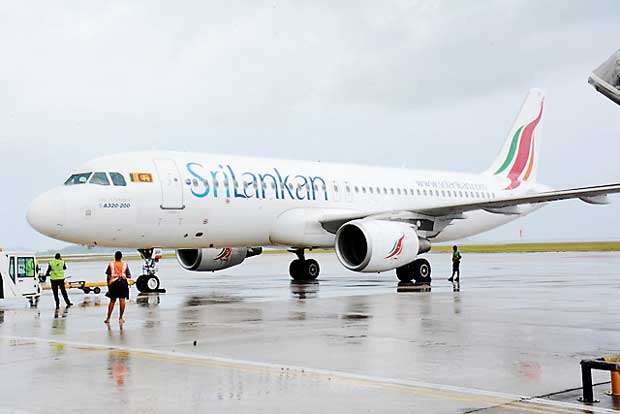24 Jan 2019 - {{hitsCtrl.values.hits}}

The losses at the national carrier, SriLankan Airlines, widened during the nine months ended December 31, 2018, despite the gains at the top line level, due to currency depreciation and higher oil prices, the airline said yesterday in a statement.
SriLankan said the net loss for the months was Rs.40 billion (approx. US $ 135 million), against a net loss of Rs.11 billion (approx. US $ 66 million) reported for the same period, last year.
The airline said the net revenue from the airline’s core operations increased to Rs.120 billion (US $ 746 million), a growth of 8 percent from a year ago.
“Increase in passenger revenue would have been much higher if not for the depreciation of key revenue-generating currencies, which amounted to US $ 9 million during the period under review,” SriLankan said.
The airline said although a marginal reduction in the total number of passengers carried (0.3 percent) was reported for the nine-month period, the overall seat factor (network-wide seat occupation) remained at 82 percent of the capacity deployed.
“The overall passenger yield, which is measured as yield per revenue passenger kilometer, improved by nearly 1.6 percent from previous year.”
However, the statement issued by the airline did not contain an overall revenue figure for group operations.
SriLankan has a catering subsidiary and engages in ground handling, aircraft maintenance and overhaul service, packaged holiday products and aviation training. The airline’s better top line performance was however overshadowed by a substantial increase in the operating cost base, owing to high fuel prices.
The total operating cost rose 15 percent during the nine months under review to Rs.147 billion (US $ 902 million) from a year ago. SriLankan said the impact due to the rise in aviation fuel prices during the period was US $ 66 million.
“Further, increase in aircraft maintenance cost and aircraft lease cost due to the addition of one A321 Neo Aircraft was reported during this period.”
Meanwhile, SriLankan incurred an interest cost of US $ 47 million during the nine months under review due to currency depreciation.
“As most of payments denominated in US dollar, SriLankan’s exposure to currency depreciation in 2018 was substantially unprecedented and resulted in higher operating costs beyond the initial projections,” the airline said.
Sri Lankan rupee depreciated over 19 percent against the US dollar in 2018.
SriLankan also suffered a negative impact of the Withholding Taxes on aircraft-related payments, amounting to US $ 23 million, during the period under consideration.
The statement said the government is currently making arrangements for SriLankan to be exempted from the Withholding Taxes on aircraft-related payments.
“The airline’s commitment to effectively manage controllable costs was well exemplified by the overall reduction of overheads in other areas such as commercial and administration, against the previous year.
The cumulative unit cost (cost per available seat kilometer – CASK), excluding fuel and interest cost, showed a reduction of 3 percent,” the statement noted.
SriLankan CEO Vipula Gunatilleke said that the year 2019 will be the year of consolidation for the airline and the management initiatives undertaken during the second half of 2018 are expected to show positive results.
“Management would continue to focus on revenue enhancement though effective capacity deployment to enhance revenue and expenditure reduction strategies to direct the airline towards sustainable financial viability,” he said.
The SriLankan management has presented a restructuring plan to the government, which focuses on progressive consolidation to bring the airline to a breakeven position in three years.
This plan specifies the action required from the government to reduce the finance cost, high fuel processing charges and various initiatives identified by the management to reduce the costs and improve revenue.
16 Nov 2024 27 minute ago
16 Nov 2024 44 minute ago
16 Nov 2024 1 hours ago
15 Nov 2024 15 Nov 2024
15 Nov 2024 15 Nov 2024